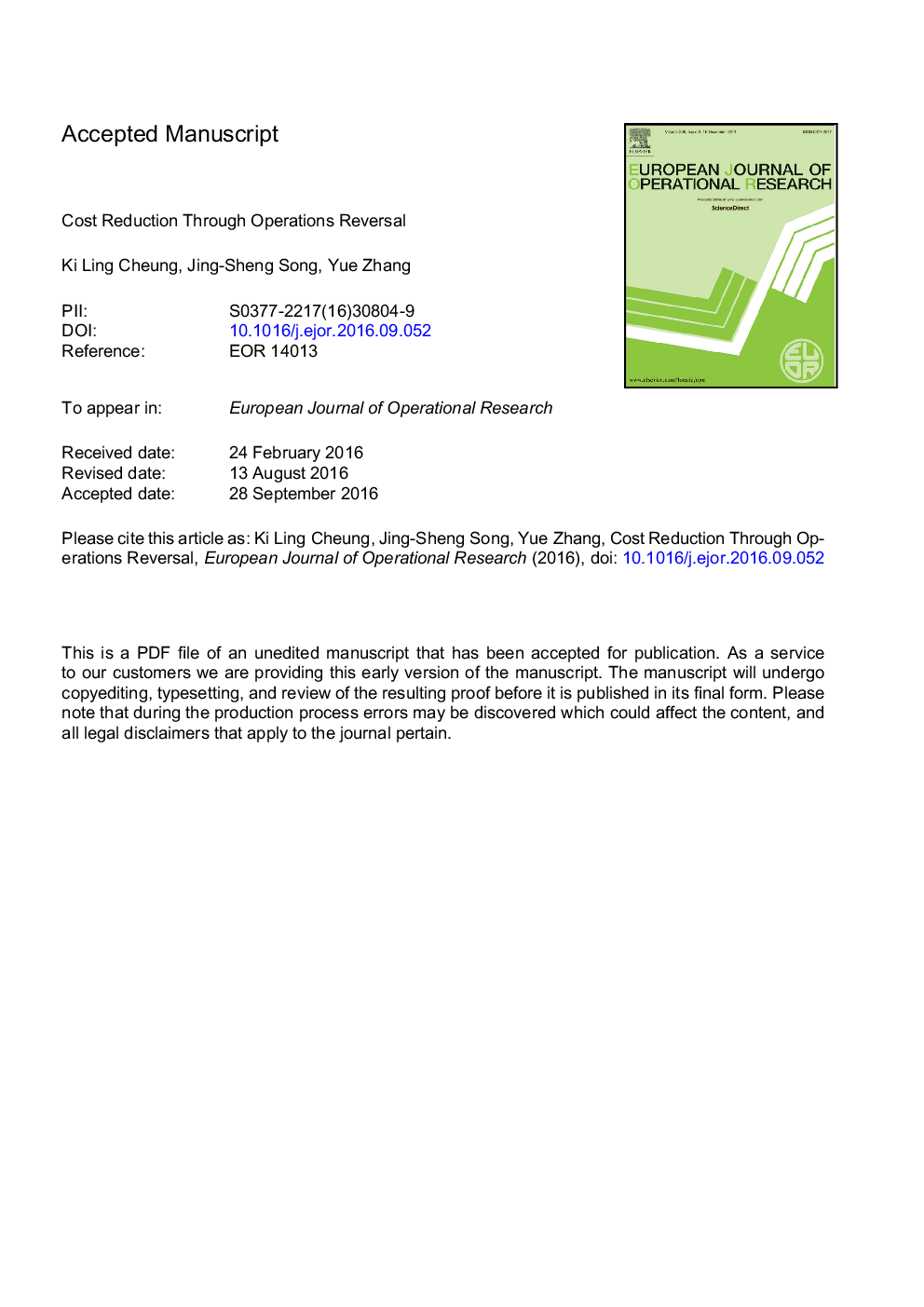| Article ID | Journal | Published Year | Pages | File Type |
|---|---|---|---|---|
| 4959916 | European Journal of Operational Research | 2017 | 42 Pages |
Abstract
In some manufacturing and service processes, several stages must be performed, but there is some freedom in the ordering of stages. Operations reversal means switching the order of two stages. Several authors have studied the benefits of operations reversal, focusing on the reduction of a certain variable's variance or a related measure. This paper focuses instead on cost. We construct a model with the standard objective of minimizing the long-run average inventory-related cost. First, by using stochastic orders, we identify conditions under which operations reversal reduces cost. We find that in some cases the variability and cost objectives agree on when operations reversal is beneficial, but in other cases they disagree. In particular, when demands are multinomially distributed, variability reduction may be accompanied by cost increase. We show that, to guarantee a lower cost, we need certain properties on the aggregated demand at the choice-level (such as demands for sweaters of the same color). Finally, we examine the effects of cost parameters and lead times on operations reversal under the cost measure.
Keywords
Related Topics
Physical Sciences and Engineering
Computer Science
Computer Science (General)
Authors
Ki Ling Cheung, Jing-Sheng Song, Yue Zhang,
